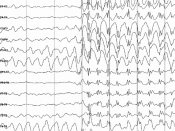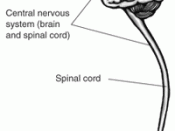More than one in ten people will experience a seizure in their lifetime. A seizure can occur due to any number of reasons, for example, a head injury, low blood sugar, a fever, or even imbalanced electrolytes. A seizure can be defined as a short-termed change of behavior due to the excessive and synchronous firing of central nervous system(CNS) neurons.1 There are many different physiological causes that can result in the occurrence of a seizure, as well as many different kinds of seizures themselves. Throughout this paper, I will explore the effects of seizures as well as the functioning in the neurons and synapses throughout the different lobes of the brain.
Seizures are categorized into two groups, generalized and partial. Partial seizures begin at a specific site in the cortex, while a generalized seizure affects both hemispheres of the brain from the beginning. Partial seizures can be further broken down into two more categories, simple partial and complex partial.
A person will remain conscious when undergoing a simple partial seizure, but may experience any of a number of symptoms, such as strange emotions and nausea, or even any number of sensory delusions.1A complex partial seizure is limited to one cerebral hemisphere and is often preceded by an aura, which is actually a simple partial seizure. During a complex partial seizure, a person experiences impaired and weakened responsiveness. Some of these symptoms can include a repetitive lip smacking or chewing, as well as amnesia.1 A curious aspect regarding simple and complex partial seizures is that often, bystanders may not be able to discern that a seizure is taking place, if they notice anything out of the ordinary at all. Oftentimes, the symptoms a person experiences during these seizures can be mistaken by professionals for other disorders, such as migraines,



Awesome
Great bits of information, very interesting and well put together...
2 out of 2 people found this comment useful.